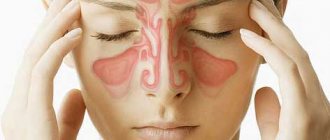The sensation called “sand in the eyes” is a phenomenon familiar to almost every person; it is a common complaint of patients when visiting an ophthalmologist and is observed in 18% of the population. This pathology brings a lot of inconvenience, accompanied by the sensation of a foreign body in the eyes, redness of the eyeball, lacrimation, burning, stinging and even acute pain. The causes of the problem can be a variety of diseases; at first, people try to solve it on their own, resorting to various medical or folk remedies, which ultimately still leads to a visit to the ophthalmologist’s office.
Antecedent factors
In most cases, the feeling of sand in the eyes occurs as a result of the development of a serious disease.
But there are physiological factors that provoke discomfort:
- incorrectly selected contact lenses for vision;
- long periods of time in front of the TV or computer (at least 5 hours);
- dry air in the room, as a result of which the conjunctival membrane dries out;
- foreign particles getting into the eyes (dust, sand);
- strong wind or direct exposure to ultraviolet rays;
- treatment with certain ophthalmic drops;
- getting water that contains chlorine into your eyes;
- fatigue of the visual organs due to poor sleep or a hard day at work;
- penetration of an infectious agent into the eye, as a result of which the conjunctival membrane becomes inflamed, suppuration appears, and lacrimation increases (without proper and timely treatment, the infection affects the whites, eyelids and deep parts of the eye apparatus);
- an allergic reaction, as a result of which the eyes become red, inflamed, and a feeling of sand appears;
- passive smoking or direct exposure of cigarette smoke to the eyes;
- increased intraocular pressure as a result of the development of certain diseases;
- eye damage (impact, fall).
Hormonal imbalance in the human body also provokes a feeling of dryness and burning in the eyes, and the presence of sand. A common situation in women during pregnancy and breastfeeding.
Causes of feeling sand in the eyes
Hormonal imbalances in the human body also occur as the body ages, when age-related changes are observed. As a result of disrupted material metabolism, the supply of oxygen to the visual organs deteriorates.
There are also everyday reasons that cause discomfort and a feeling of sand in the eyes:
- repairs or cleaning in a residential area when particles of dust or debris get into the eyes;
- welding work carried out without special protection causes the effect of sand in the eyes (accompanying symptoms are red squirrels and severe pain);
- burn of the retina by steam, hot water or chemicals (household chemicals, hazardous industries).
In a stuffy room where air conditioning or heating devices are running, dry air causes discomfort and a feeling of sand in the eyes. The same thing happens during treatment with certain medications, including not only blood pressure-lowering drugs, but also antiallergic drugs and antidepressants.
Reasons why there is a feeling of sand in the eyes
- Contact with foreign objects on the eye shell. For example, when there is a strong wind, sand or dust can actually get in. This is the most common reason. No treatment is required to eliminate the discomfort. It is enough to wash your face with warm water. And to eliminate inflammation, you need to use Albucit drops;
- If the feeling occurs in the morning, it indicates a dry eye effect. It is observed after waking up and disappears during the day. This indicates insufficient secretion of tear fluid, which should wet the protein, moistening it;
- The reasons may include infectious diseases. If infection gets into the eye it causes inflammation. It is capable of covering the whites of the eyelids and penetrating deeply. But there will definitely be suppuration and lacrimation;
- This effect is the result of an allergy. Contact with an irritating object causes redness of the whites and a feeling of sand in the eye.
| This effect has to be treated in different ways. Therefore, it is important to diagnose the cause. Then you will be able to choose the right treatment. |
Pathologies
The feeling of sand in the eyes (the causes and treatment will be determined by an ophthalmologist after a comprehensive diagnosis) is provoked by numerous diseases.
They require properly selected therapy to reduce the likelihood of complications:
| Name | Description |
| Logophthalmos | The disease is characterized by incomplete closure of the eyelids. More often, the pathology is diagnosed in children or the elderly. Due to logophthalmos, the structure and consistency of the visual film is disrupted. As a result, the eyeballs are not sufficiently hydrated. |
| Dry eye syndrome | The pathological condition appears once or bothers the person periodically. The chronic form of the disease requires the use of special eye drops that help restore the tear film. Dry eye syndrome most often bothers a person in the morning after a night's rest. |
| Conjunctivitis and keratitis | Pathological processes arise as a result of disruption of the functioning of certain organs of the visual system. The conjunctiva dries out and a feeling of sand appears in the eyes. A person experiences severe pain and increased sensitivity to light. |
| Computer vision syndrome | A disease that is more often diagnosed in people who work at a computer for a long time (at least 5 hours). In this situation, a person will be disturbed not only by the feeling of sand in the eyes, but also by other clinical symptoms. Pain, redness of the eyes, burning, dryness. |
| Blepharitis | A disease in which the edges of the eyelids become inflamed. The conjunctival membrane is also affected. The cause is most often an infection or an allergic reaction. Blepharitis is difficult to treat and sometimes leads to eye damage and blurred vision. |
| Barley | A pathological condition of viral origin, most often occurs after hypothermia. A dense small pouch forms in the eyelid area, which develops and gradually enlarges, beginning to pull the skin down. The patient is worried about the feeling of a foreign body in the eye. A stye interferes with vision and prevents a person from blinking normally. |
| Chalazion | A chronic eye disease characterized by the formation of a benign tumor on the edge of the eyelid. The pathological condition occurs as a result of blockage of the sebaceous glands, which causes a strong inflammatory process to develop. The disease proceeds in stages and is accompanied by clinical signs (itching, hyperemia of soft tissues, pain). |
| Glaucoma | A dangerous disease, which in most cases occurs without obvious symptoms and is accompanied by high intraocular pressure. Pathological processes are more often diagnosed at later stages of development. Due to glaucoma, a person can completely lose their vision. |
| Rheumatoid arthritis, hyperthyroidism | The diseases are accompanied by a feeling of sand in the eyes. More often, the symptom appears as an adverse reaction to treatment with medications for low blood pressure. |
| Vasculitis | Pathological processes negatively affect the visual organ, namely the blood vessels located in this area. The disease is autoimmune and provokes an inflammatory process in the area of the walls of blood vessels. Without timely treatment, the affected cells die, which leads to a significant deterioration in blood circulation. |
In each individual case, pathological processes are accompanied by pronounced clinical signs, with which it is important to consult an ophthalmologist and undergo a full examination. The diagnostic results are necessary for a specialist to determine the cause of dry eyes and select the most effective method of therapy.
Why do you get pain in your eyes and a feeling like you've got sand in your eyes?
Cramps can occur for various reasons. The lacrimal lash has three layers and is produced by several glands. It moistens, nourishes and prevents moisture from evaporating from the surface layer of the eyeball. Blinking ensures uniform distribution of the film over the cornea. Dryness in the eye can occur due to a decrease in the thickness of the layer and the appearance of tears.
The film affects not only the functional state of the cornea and conjunctiva, but also the optical properties of the eye. Thanks to it, the refractive ability of the corneal layer is preserved.
Dry eyes not only cause discomfort, but also reduce visual acuity.
Factors influencing the quality of the tear film:
- inflammation of the cornea;
- conjunctiva;
- century;
- dry air;
- increased visual load;
- taking medications;
- use of soft contact lenses.
In the video, what can be done when there is as if there is sand in the eyes:
Causes of inflammatory phenomena
The cause of inflammatory phenomena can be bacterial or viral infection. Bacterial infection is caused by gram-positive, gram-negative bacteria, E. coli. Adenoviruses and herpes are the culprit of viral infection.
Dry air of any temperature (low or high) promotes increased evaporation of moisture from the surface of the eye. In rooms where air conditioners are used, the air is always dry, which can cause the cornea to dry out.
Young people who spend a lot of time at the computer suffer from “computer syndrome.” Computer monitors have pulsation, radiation in the violet-blue spectrum, which negatively affects the organs of vision. Prolonged tension of the eye muscles causes their exhaustion. Poor nutrition of the eye tissue affects the production of tear fluid.
Medicines such as antidepressants, antihypertensives, hormonal, and antiallergic drugs affect the production of tears. This effect is due to a decrease in cellular metabolism and the removal of fluid from the body.
Contact lenses act on the film, preventing it from being evenly distributed over the surface of the cornea. There is a feeling of discomfort and dryness in the eye. Lenses prevent oxygen from reaching the cornea, which also causes eye irritation. Failure to follow the rules of lens care leads to even greater eye inflammation. But what progressive lenses for glasses look like and what their price is can be seen here.
In what cases should you seek help?
You should definitely visit an ophthalmologist if you experience a feeling of sand in your eyes. This symptom may indicate the development of a serious illness. The pathological condition cannot be ignored, especially if accompanying symptoms are present.
Emergency medical care is required for a person in the following situations:
- discomfort is more disturbing after putting on contact lenses;
- the feeling of the presence of sand appeared after a strong wind, being in a dusty room, if a person feels the presence of a foreign body;
- the feeling of sand in the eyes appears in the morning and the symptom intensifies until evening;
- discomfort is accompanied by severe pain, which can be relieved with medications for a short period of time.
You should not rub your eyes or try to remove the foreign body on your own, which will only worsen the situation. You should not use medications without a doctor's prescription. It is important to go to the hospital in a timely manner and undergo treatment. Without proper therapy, there is a high probability of serious complications, including loss of vision.
Manifestations
The feeling of sand in the eyes (the causes and treatment require a comprehensive diagnosis, as well as consultation with an ophthalmologist) is often a consequence of serious diseases and is accompanied by concomitant clinical signs.
When the eyes are damaged by infectious agents, a person develops an inflammatory disease (blepharitis, keratitis, conjunctivitis).
Pathologies are accompanied by the following clinical symptoms:
- eyelids become swollen and red;
- worries about severe pain;
- an infectious lesion is accompanied by the appearance of purulent discharge (in some situations, accumulations overnight prevent a person from opening his eyes normally in the morning);
- the skin on the inside of the eyelids is severely inflamed;
- the eyes not only hurt, but also water;
- the eyelids become inflamed, there is a sensation of a foreign body;
- burning, stinging and dryness appear;
- eye pressure occurs;
- lacrimation increases;
- sensitivity to light increases;
- in some situations, vision deteriorates.
The eyeball turns red because pathological processes cause damage to the blood vessels. They break, resulting in minor bleeding.
Research
A comprehensive examination for the sensation of sand in the eyes is prescribed to patients in order to establish the exact cause, which resulted in discomfort. The ophthalmologist will take the results obtained into account when drawing up a treatment regimen.
The feeling of sand in the eyes (the causes and treatment will be determined by a specialist, taking into account the person’s complaints) requires the following testing methods:
| Name | Description |
| Ophthalmoscopy | The specialist evaluates the condition of the fundus using a slit lamp. |
| Schirmer test | A research method that helps assess the state of the tear production process. |
| Canalicular and nasal test | Diagnostic tests will help determine the condition of the tear ducts. |
| Smear | The specialist takes test material from the conjunctiva to determine the causative agents of the inflammatory process and their sensitivity to antibacterial drugs. |
| Norn's Test | The diagnostic method helps determine the quality of the tear film and the rate of fluid evaporation. |
| Fluorescein installation test | During the examination, a special liquid is used that stains damaged areas in the cornea and tear film. |
A comprehensive diagnosis is carried out in order to differentiate the disease, since many pathological processes are accompanied by similar clinical symptoms. In addition, the patient may need consultation with other specialized specialists (endocrinologist, allergist, neurologist).
Diagnostics: identifying the problem
If a patient turns to an ophthalmologist with complaints about the unpleasant sensation of “sand in the eyes,” first of all, the specialist collects an anamnesis and finds out the cause of the problem. To do this, a complete, comprehensive examination of the visual system is carried out, during which intraocular pressure is measured, current visual acuity and the presence of refractive errors are checked, and then an ophthalmoscopy procedure is performed using a slit lamp. All the processes described make it possible to identify the degenerative nature of the disease, leading to drying of the conjunctival membrane of the eyes, and make a preliminary diagnosis.
If a patient is suspected of having dry eye syndrome, the doctor additionally performs a Schirmer test, which allows one to determine how the glands responsible for the production of tear fluid function. Also, nasal and canalicular tests help the specialist understand whether there are any malfunctions in the lacrimal ducts.
Often the cause of the feeling of the presence of “sand in the eyes,” as mentioned above, is inflammatory processes in the organs of vision. To determine their presence or absence, it is necessary to take a smear from the conjunctiva for subsequent culture. If the causes of the anomaly are non-ophthalmological diseases, an additional general examination of the body by an endocrinologist, allergist, neurologist or other specialists is required.
How to get rid of it?
Therapy of the visual organ is carried out using complex methods. The ophthalmologist selects effective methods, taking into account the results of the study and the patient’s condition. Medicines and topical agents are prescribed. If there are no serious medical contraindications, the use of unconventional methods by witch doctors and healers is allowed.
Medicines
It is important to use medications strictly, following your doctor’s instructions, to reduce the likelihood of side effects. It is recommended to refrain from self-treatment so as not to worsen your health condition.
The feeling of sand in the eyes (the causes and treatment will be determined by an ophthalmologist using diagnostic tests) will help eliminate the following drops:
Hyphenosis eye drops
| Group of drugs | Name | Application |
| Keratoprotectors | Hyphenlez, Korneregel | Medicines help treat keratitis and are prescribed more often when the cornea is damaged. Adult patients are recommended to use drops 4-8 times a day. The standard dosage is 1-2 drops into the conjunctival sac. The course of treatment lasts 2-3 weeks. |
| Antibacterial drops | Tobrex, Levomycetin | The drugs slow down the proliferation of pathogenic flora and eliminate irritation of the eyeball. The treatment regimen depends on the disease and the degree of eye damage. Adults are prescribed 1-2 drops every 1-4 hours into the conjunctival sac of the affected eye. In most cases, therapy lasts 7-10 days. |
| Antiviral drugs | Aktipol, Oftalmoferon | The medicine is dripped into each conjunctival sac 3-8 times a day, 2 drops. Treatment lasts 7-10 days. |
| Anti-inflammatory drops | Indocollir, Diclofenac | The drug is used 1 drop 4-6 times a day. The medicine is instilled into the conjunctival sac. |
| Antihistamines | Cromohexal, Allergodil | Instillation is carried out into the conjunctival sac, 1-2 drops every 4-6 hours. |
| Moisturizers | Santa, Artificial tear | The drops help not only moisturize the tear film, but also remove the feeling of sand in the eyes. The medicine should be injected into the conjunctival sac of the affected eye, 1-2 drops. |
Artificial tear drops
Additionally, the patient is prescribed eye drops, which contain the necessary vitamins and microelements. The treatment regimen depends on the provoking factor that caused the sensation of sand in the eyes.
Often, the use of drops is sufficient for complete recovery. In severe situations, with eye damage and the presence of a feeling of poured sand, patients are prescribed medications that should be taken orally.
Home Recipes
The causes of the feeling of sand in the eyes can be eliminated using unconventional methods, but strictly after consultation with an ophthalmologist. Treatment must be carried out comprehensively. It is necessary to take into account the high likelihood of an allergic reaction or individual sensitivity.
Effective folk remedies of healers and healers:
| Name | Recipe | Application |
| Eye drops | Mix natural honey and boiled water in proportions 1:2 until smooth. | It is recommended to drop the finished medicine into each eye 2-4 times a day. |
| Marshmallow root | Pour the dry herb of the plant (2 tbsp.) with chilled boiled water (1 tbsp.). Leave the resulting mass in a dark, dry place for 8-9 hours. Strain and use for compresses. | A cotton swab must be moistened with the herbal solution and applied to the sore eye for 10 minutes. It is recommended to perform the procedures 2-4 times every day. |
| Potato | Wash and peel small vegetables. Cut into small circles. | It is recommended to apply potato slices to sore eyes for 10-15 minutes. |
| Chamomile | Brew 30-60 g of dry herb with boiling water (1 tbsp.). Leave for 20-30 minutes. and strain. | Chamomile has a powerful anti-inflammatory and calming effect. The prepared solution is recommended for use as an eye wash. |
| Cheremsha | Pour 10 g of plant with hot water (200 ml). It is recommended to keep the resulting solution for at least 8 hours, then strain well. | The prepared decoction of wild garlic is used for lotions. Wet a cotton pad and place it on your eyes. The treatment procedure lasts 20 minutes. Sessions are held every day 2-3 times. |
A proven and widespread folk remedy is simple tea in bags or loose leaves. It is recommended to apply it to the sore eye for 15-20 minutes. Leaf tea should be brewed, cooled, wrapped in several layers of gauze and compressed for 20-25 minutes.
The unpleasant feeling of sand in the eyes cannot be ignored and a trip to a specialist cannot be postponed. Discomfort may occur as a result of a serious illness. An ophthalmologist will help identify the cause and prescribe qualified treatment. And compliance with preventive measures and periodic visits to a specialist will help prevent damage to the visual organs.
Remedies for treating “sand in the eyes”
In folk medicine, one of the most popular ways to treat sand in the eyes is to wash the eyes with chamomile decoction. This is one of the safest ways to relieve the symptoms of sand in the eyes.
In addition, there are recommendations for instilling honey drops. However, this method is not suitable for everyone, because if the eyes are inflamed, honey can cause increased symptoms of the disease and complications.
Therefore, it is always necessary to clearly understand the reason for the appearance of this symptom in the eyes and not self-medicate.
With the right tactics and timely treatment, treatment of dry eye syndrome with folk remedies can be very effective. Considering that the eye is a delicate and easily injured organ, a person should discuss all manipulations to improve vision with a doctor.
Dry cornea can be easily treated with compresses and rinses. The easiest way is to apply a bandage with strong tea leaves on your eyelids. Cotton pads are saturated with a warm drink and placed over closed eyes. It is also allowed to use decoctions of chamomile, calendula and sage.
An infusion of marshmallow root is used to wash the eyes. The raw materials are poured with boiled water 1:2 and left for 8 hours. Then it is filtered and used for procedures in the morning, lunch and evening. Or only 2 times.
Homemade honey drops are prepared from high-quality honey and boiled water (1:2). The solution is suitable for cases where xerophthalmia is not associated with allergies. Otherwise, the beekeeping product will worsen the situation.
It is important to accurately identify the cause of the effect. After all, if a foreign object gets in, there is no need for antibiotics or other drugs. Therefore, treatment can be divided into two groups:
- If there is a foreign object, you need to rinse your eye. Afterwards, it is necessary to instill Albucid to prevent the development of infection. Visin will help with dry eyes and fatigue from working on a PC.
- If there is an infection accompanied by inflammation, pus and tear fluid, antibiotics are needed. Sulfacyl sodium drops and Tsiprolet are good options. But their use must be combined with instillation of Albucid to wash the eyes.
Antibiotics are prescribed only by a doctor based on tests. Separately, it is necessary to indicate traditional methods. Chamomile infusion will help greatly. Dry plants need to be filled with water and allowed to brew. The resulting liquid should be used to rinse the eyes and make lotions.










